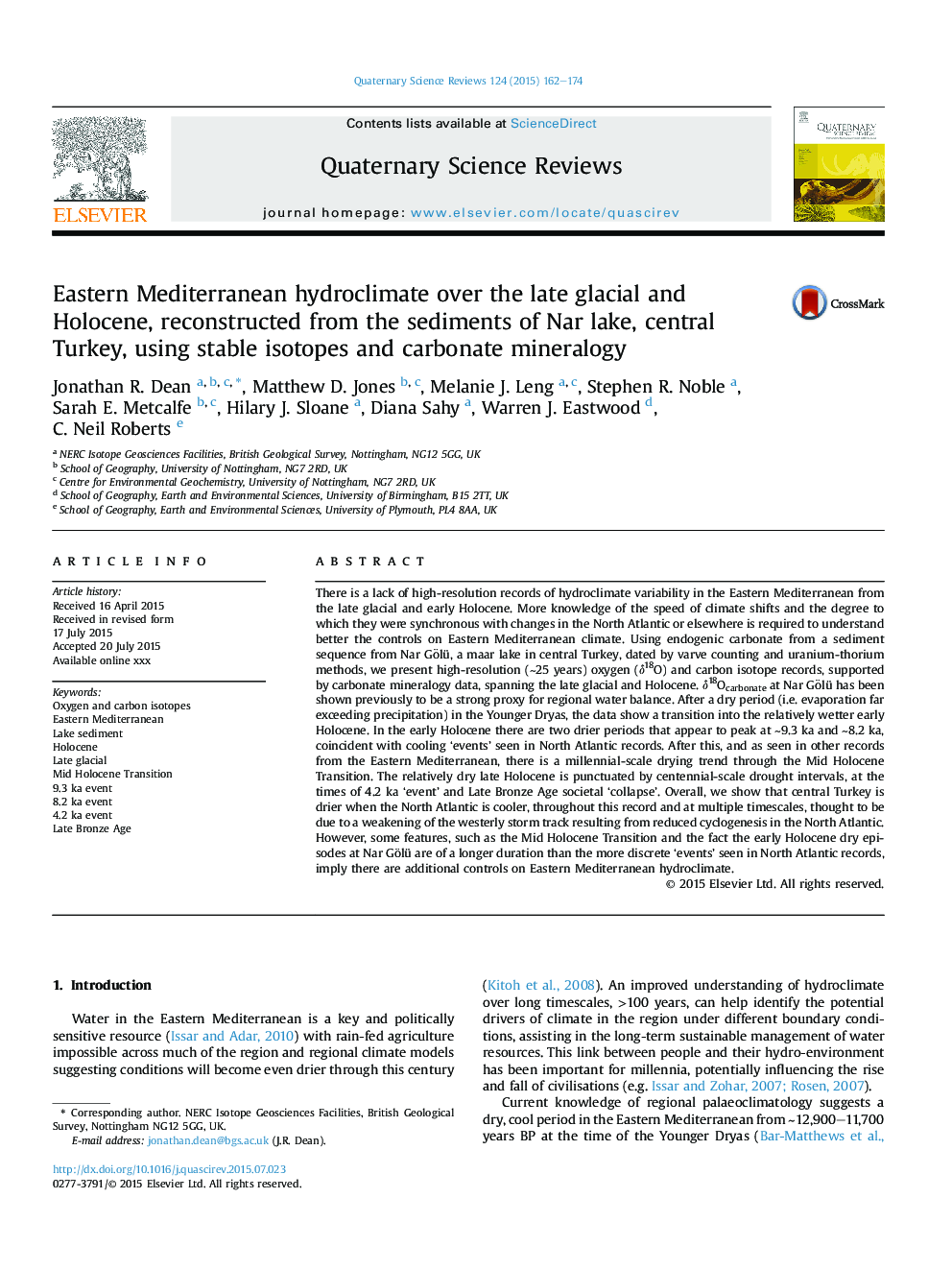| کد مقاله | کد نشریه | سال انتشار | مقاله انگلیسی | نسخه تمام متن |
|---|---|---|---|---|
| 6445512 | 1640810 | 2015 | 13 صفحه PDF | دانلود رایگان |
عنوان انگلیسی مقاله ISI
Eastern Mediterranean hydroclimate over the late glacial and Holocene, reconstructed from the sediments of Nar lake, central Turkey, using stable isotopes and carbonate mineralogy
ترجمه فارسی عنوان
آبمیوه مدیترانه ای مدیترانه ای در اواخر یخبندان و هولوسن، که از رسوبات دریاچه نار، مرکزی ترکیه، با استفاده از ایزوتوپ های پایدار و کانی شناسی کربنات بازسازی شده است
دانلود مقاله + سفارش ترجمه
دانلود مقاله ISI انگلیسی
رایگان برای ایرانیان
کلمات کلیدی
موضوعات مرتبط
مهندسی و علوم پایه
علوم زمین و سیارات
زمین شناسی
چکیده انگلیسی
There is a lack of high-resolution records of hydroclimate variability in the Eastern Mediterranean from the late glacial and early Holocene. More knowledge of the speed of climate shifts and the degree to which they were synchronous with changes in the North Atlantic or elsewhere is required to understand better the controls on Eastern Mediterranean climate. Using endogenic carbonate from a sediment sequence from Nar Gölü, a maar lake in central Turkey, dated by varve counting and uranium-thorium methods, we present high-resolution (â¼25 years) oxygen (δ18O) and carbon isotope records, supported by carbonate mineralogy data, spanning the late glacial and Holocene. δ18Ocarbonate at Nar Gölü has been shown previously to be a strong proxy for regional water balance. After a dry period (i.e. evaporation far exceeding precipitation) in the Younger Dryas, the data show a transition into the relatively wetter early Holocene. In the early Holocene there are two drier periods that appear to peak at â¼9.3 ka and â¼8.2 ka, coincident with cooling 'events' seen in North Atlantic records. After this, and as seen in other records from the Eastern Mediterranean, there is a millennial-scale drying trend through the Mid Holocene Transition. The relatively dry late Holocene is punctuated by centennial-scale drought intervals, at the times of 4.2 ka 'event' and Late Bronze Age societal 'collapse'. Overall, we show that central Turkey is drier when the North Atlantic is cooler, throughout this record and at multiple timescales, thought to be due to a weakening of the westerly storm track resulting from reduced cyclogenesis in the North Atlantic. However, some features, such as the Mid Holocene Transition and the fact the early Holocene dry episodes at Nar Gölü are of a longer duration than the more discrete 'events' seen in North Atlantic records, imply there are additional controls on Eastern Mediterranean hydroclimate.
ناشر
Database: Elsevier - ScienceDirect (ساینس دایرکت)
Journal: Quaternary Science Reviews - Volume 124, 15 September 2015, Pages 162-174
Journal: Quaternary Science Reviews - Volume 124, 15 September 2015, Pages 162-174
نویسندگان
Jonathan R. Dean, Matthew D. Jones, Melanie J. Leng, Stephen R. Noble, Sarah E. Metcalfe, Hilary J. Sloane, Diana Sahy, Warren J. Eastwood, C. Neil Roberts,
